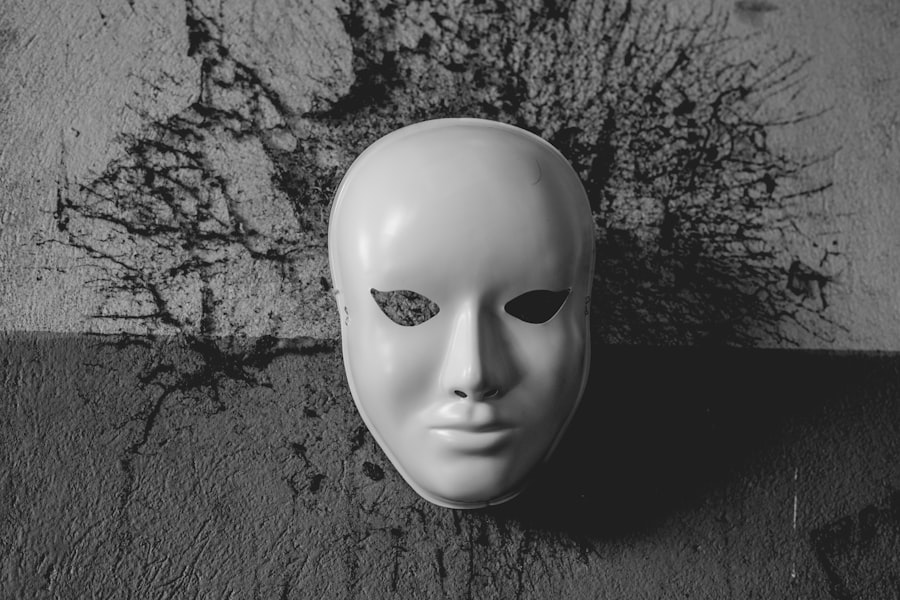Depersonalization and derealization are psychological phenomena that can leave you feeling detached from your own thoughts, feelings, or sense of self. When you experience depersonalization, it may feel as though you are an observer of your own life, as if you are watching yourself from a distance. This can lead to a profound sense of disconnection from your body and emotions, making it difficult to engage fully with the world around you.
On the other hand, derealization involves a sense of unreality regarding your surroundings. You might perceive the world as foggy, dreamlike, or distorted, leading to feelings of confusion and anxiety. These experiences can be unsettling and disorienting, often leaving you questioning your own reality.
While they can occur in isolation, they are frequently associated with stress, trauma, or anxiety disorders. Understanding these phenomena is crucial for recognizing their impact on your daily life and mental well-being. You may find that these feelings can be temporary or chronic, depending on various factors such as stress levels, mental health conditions, or past experiences.
Key Takeaways
- Depersonalization/Derealization is a mental health condition characterized by feeling detached from oneself or the world around them.
- Symptoms of Depersonalization/Derealization include feeling like an outside observer of one’s thoughts or body, and experiencing a sense of unreality or detachment from the environment.
- Causes of Depersonalization/Derealization can include trauma, stress, anxiety, and substance abuse.
- Depersonalization/Derealization can be related to panic attacks, as the feelings of detachment and unreality can trigger or exacerbate panic symptoms.
- Understanding panic attacks involves recognizing the sudden onset of intense fear or discomfort, often accompanied by physical symptoms such as rapid heartbeat and sweating.
Symptoms of Depersonalization/Derealization
The symptoms of depersonalization and derealization can vary widely from person to person. You might find yourself feeling emotionally numb or disconnected from your thoughts, as if you are merely going through the motions of life without truly experiencing it. This emotional detachment can lead to difficulties in forming connections with others, as you may feel like an outsider looking in.
Additionally, you might experience a distorted sense of time, where moments seem to stretch or compress in ways that feel unnatural. In terms of derealization, you may notice that your environment appears altered or unreal. Objects might seem flat or two-dimensional, and familiar places may take on an unfamiliar quality.
This can create a sense of unease and confusion, making it challenging to navigate everyday situations. You might also experience heightened anxiety or panic as a result of these symptoms, further complicating your ability to cope with the feelings of detachment and unreality.
Causes of Depersonalization/Derealization

The causes of depersonalization and derealization are complex and multifaceted. Often, these experiences are linked to significant stressors or traumatic events in your life. For instance, if you have experienced a traumatic incident, such as an accident or abuse, your mind may resort to depersonalization as a coping mechanism.
This dissociative response allows you to distance yourself from the emotional pain associated with the trauma, albeit at the cost of feeling disconnected from reality. Additionally, anxiety and panic disorders can contribute to the onset of these symptoms. When you are under intense stress or facing overwhelming anxiety, your brain may trigger depersonalization or derealization as a way to protect itself from perceived threats.
Substance use can also play a role; certain drugs or alcohol can induce feelings of detachment and unreality. Understanding the underlying causes is essential for addressing these experiences and finding effective coping strategies.
How Depersonalization/Derealization Relates to Panic Attacks
| Metrics | Depersonalization/Derealization | Panic Attacks |
|---|---|---|
| Prevalence | Common in individuals with panic disorder | Often co-occurs with depersonalization/derealization |
| Symptoms | Feeling detached from oneself or surroundings | Sudden onset of intense fear or discomfort |
| Triggers | Stress, trauma, or drug use | Stress, phobias, or traumatic events |
| Treatment | Therapy, medication, and stress management | Therapy, medication, and relaxation techniques |
Depersonalization and derealization often coexist with panic attacks, creating a cycle that can be difficult to break. When you experience a panic attack, the intense fear and physical symptoms can lead to feelings of detachment from yourself and your surroundings. This dissociation can serve as a protective mechanism during moments of extreme anxiety, but it can also exacerbate the panic attack itself.
You may find that the more you focus on your feelings of unreality, the more anxious you become, leading to a vicious cycle. Moreover, the fear of experiencing depersonalization or derealization can trigger further panic attacks. You might become hyper-aware of your thoughts and sensations, leading to increased anxiety about losing control or feeling disconnected from reality.
This heightened state of awareness can make it challenging to ground yourself in the present moment, perpetuating feelings of fear and confusion. Recognizing this relationship between depersonalization/derealization and panic attacks is crucial for developing effective coping strategies.
Understanding Panic Attacks
Panic attacks are sudden episodes of intense fear or discomfort that peak within minutes. During these episodes, you may experience a range of physical and emotional symptoms that can be overwhelming. The sensation of impending doom or loss of control often accompanies these attacks, making them particularly distressing.
Understanding what constitutes a panic attack is essential for recognizing when you or someone else is experiencing one. Typically, panic attacks can occur unexpectedly or in response to specific triggers. You might find yourself in a situation where you feel trapped or unable to escape, leading to an overwhelming sense of fear.
Alternatively, panic attacks can arise without any identifiable cause, leaving you feeling confused and anxious about when the next episode might occur. This unpredictability can contribute to ongoing anxiety about future attacks, further complicating your mental health.
Symptoms of Panic Attacks

The symptoms of panic attacks can manifest both physically and emotionally. You may experience rapid heart rate, shortness of breath, chest pain, dizziness, or trembling during an attack. These physical sensations can mimic those of a heart attack or other medical emergencies, which can heighten your fear and anxiety in the moment.
Emotionally, panic attacks can leave you feeling overwhelmed and helpless. You may find it difficult to concentrate or think clearly during an episode, leading to feelings of confusion and disorientation.
After the attack subsides, you might experience lingering anxiety about when the next one will occur, creating a cycle of fear that can impact your daily life. Recognizing these symptoms is vital for understanding your experiences and seeking appropriate support.
Triggers for Panic Attacks
Identifying triggers for panic attacks is an essential step in managing them effectively. Triggers can vary widely from person to person; what causes one individual to experience a panic attack may not affect another in the same way. Common triggers include stressful life events such as job loss, relationship issues, or significant changes in routine.
You might also find that certain environments—such as crowded places or confined spaces—can provoke feelings of anxiety that lead to an attack. In addition to external triggers, internal factors such as negative thought patterns or physical sensations can also contribute to panic attacks. For instance, if you are particularly sensitive to bodily sensations like increased heart rate or shallow breathing, these feelings may trigger an attack due to heightened anxiety about what they signify.
Understanding your unique triggers is crucial for developing effective coping strategies and reducing the frequency of panic attacks.
How Depersonalization/Derealization Can Exacerbate Panic Attacks
The interplay between depersonalization/derealization and panic attacks can create a challenging cycle that exacerbates both experiences. When you experience depersonalization during a panic attack, it can intensify feelings of fear and confusion. The sensation of being detached from yourself may lead you to believe that something is seriously wrong with your mental state, further heightening your anxiety.
Conversely, if you frequently experience depersonalization or derealization outside of panic attacks, this may increase your overall anxiety levels and make you more susceptible to future attacks. The fear of losing touch with reality can create a constant state of vigilance that leaves you on edge and more likely to react strongly to stressors. Recognizing this relationship is essential for developing effective coping mechanisms that address both issues simultaneously.
Coping Strategies for Depersonalization/Derealization
Coping with depersonalization and derealization requires a multifaceted approach that addresses both the psychological and emotional aspects of these experiences. One effective strategy is grounding techniques that help anchor you in the present moment. Engaging your senses—such as focusing on the texture of an object or listening intently to sounds around you—can help bring you back into your body and reduce feelings of detachment.
Mindfulness practices can also be beneficial in managing depersonalization/derealization symptoms. By cultivating awareness of your thoughts and feelings without judgment, you may find it easier to accept these experiences rather than resist them. Additionally, maintaining a healthy lifestyle through regular exercise, balanced nutrition, and adequate sleep can support overall mental well-being and reduce the frequency of these symptoms.
Coping Strategies for Panic Attacks
When it comes to managing panic attacks, having effective coping strategies in place is crucial for regaining a sense of control during episodes. One common technique is deep breathing exercises; focusing on slow, deliberate breaths can help calm your nervous system and reduce physical symptoms associated with panic attacks. You might also find it helpful to practice progressive muscle relaxation—tensing and then relaxing different muscle groups—to alleviate tension in your body.
Cognitive-behavioral techniques can also be beneficial for addressing negative thought patterns associated with panic attacks. Challenging irrational fears and reframing them into more realistic perspectives can help reduce anxiety over time. Additionally, keeping a journal to track your thoughts and feelings during panic attacks may provide insight into triggers and patterns that you can address in therapy or through self-help strategies.
Seeking Professional Help for Depersonalization/Derealization and Panic Attacks
If you find that depersonalization/derealization or panic attacks significantly impact your daily life, seeking professional help is an important step toward recovery. A mental health professional can provide support through therapy options such as cognitive-behavioral therapy (CBT), which has been shown to be effective in treating both conditions. Therapy offers a safe space for exploring underlying issues contributing to your experiences while equipping you with coping strategies tailored to your needs.
In some cases, medication may also be recommended as part of a comprehensive treatment plan for managing symptoms associated with depersonalization/derealization and panic attacks. Consulting with a psychiatrist or primary care physician can help determine whether medication is appropriate for your situation. Remember that seeking help is not a sign of weakness; rather, it demonstrates strength and commitment to improving your mental health and overall well-being.
In conclusion, understanding depersonalization/derealization and panic attacks is essential for navigating these complex experiences effectively. By recognizing symptoms, identifying triggers, and implementing coping strategies—alongside seeking professional support—you can work toward regaining control over your mental health and enhancing your quality of life.
Individuals experiencing a panic attack may feel as though they are outside of their body or that the world around them is not real, which are hallmark symptoms of depersonalization and derealization. For a deeper understanding of these experiences and their psychological underpinnings, you can explore an insightful article on the topic at Unplugged Psych. This resource provides valuable information on the symptoms, causes, and potential treatments for these distressing conditions, helping individuals and their loved ones navigate the complexities of mental health challenges.
LEARN MORE About Unmasking the Mysteries Behind Depersonalization and Derealization
FAQs
What is depersonalization-derealization disorder?
Depersonalization-derealization disorder is a mental health condition characterized by feeling detached from oneself (depersonalization) and feeling detached from the surrounding environment (derealization). It can be a distressing and disruptive experience for those who suffer from it.
What are the symptoms of depersonalization-derealization disorder?
Symptoms of depersonalization-derealization disorder may include feeling like an outside observer of one’s thoughts, feelings, and body (depersonalization), and feeling like the world is unreal or distorted (derealization). Other symptoms may include emotional numbness, disconnection from one’s own identity, and anxiety.
What causes depersonalization-derealization disorder?
The exact cause of depersonalization-derealization disorder is not fully understood, but it is believed to be related to a combination of biological, psychological, and environmental factors. Trauma, stress, anxiety, and certain personality traits may contribute to the development of the disorder.
How is depersonalization-derealization disorder diagnosed?
Diagnosis of depersonalization-derealization disorder is typically based on a thorough psychological evaluation, including a discussion of symptoms, medical history, and ruling out other potential causes. It is important to consult a mental health professional for an accurate diagnosis.
What are panic attacks?
Panic attacks are sudden and intense episodes of fear or anxiety that can cause physical and emotional distress. Symptoms may include rapid heart rate, sweating, trembling, shortness of breath, chest pain, and a sense of impending doom. Panic attacks can be triggered by specific situations or occur unexpectedly.
What is the relationship between depersonalization-derealization disorder and panic attacks?
Depersonalization-derealization disorder and panic attacks are often interconnected, as individuals with depersonalization-derealization disorder may experience panic attacks as a result of the distress caused by their symptoms. The feelings of detachment and unreality associated with the disorder can contribute to the onset of panic attacks.
How is depersonalization-derealization disorder and panic attacks treated?
Treatment for depersonalization-derealization disorder and panic attacks may include a combination of psychotherapy, medication, and lifestyle changes. Cognitive-behavioral therapy (CBT) and medication such as antidepressants or anti-anxiety medications may be recommended. It is important for individuals to seek professional help for an individualized treatment plan.




